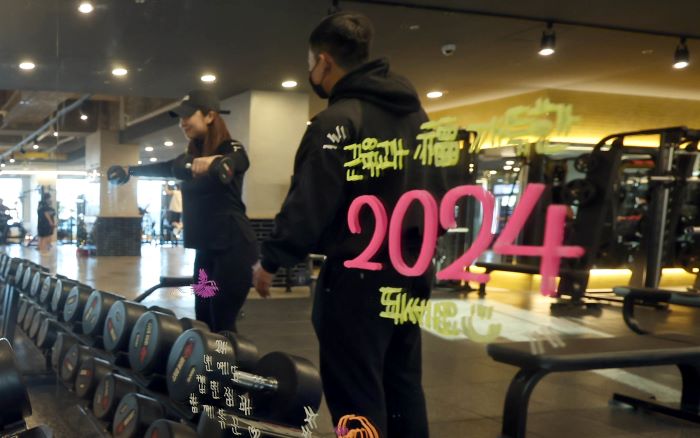
A citizen works out at a fitness center (gym) as more and more people decide to exercise as a New Year’s resolution. (Yonhap)
SEOUL, Jan. 8 (Korea Bizwire) –A recent report indicates that nearly half of South Koreans are not engaging in the amount of physical activity recommended by the World Health Organization (WHO), falling significantly below the global average.
The Ministry of Health and Welfare of South Korea has updated the ‘Physical Activity Guidelines for Koreans,’ a revision made for the first time since 2012.
The updated guidelines, which now include detailed recommendations for various age groups and reflect recent research linking physical activity and health, reveal concerning trends in the nation’s exercise habits.
According to the guidelines, the WHO recommends that adults engage in at least 150 minutes of moderate-intensity or 75 minutes of high-intensity aerobic physical activities per week. For teenagers, the recommendation is at least one hour of moderate to high-intensity physical activities daily.
However, while 72% of adults worldwide adhere to these guidelines, only 47.9% of Koreans did so in 2021, a gap of more than 20 percentage points with the global average.
The guidelines suggest that adults aged 19 to 64 engage in 150 to 300 minutes of moderate-intensity or 75 to 150 minutes of high-intensity physical activities per week, along with muscle-strengthening activities at least twice a week.
For those aged 65 and above, balance exercises are recommended at least three times a week, in addition to the general guidelines.
Moderate physical activities include exercise like brisk walking, housework, bathing a child or pet, hiking (low incline), biking (less than 16 km/h), golf, practicing racket sports, and light dancing, while high-intensity physical activities include moving heavy objects such as boxes or furniture, running, mountain climbing (high incline or with a heavy backpack), biking (over 16 km/h), competing in racket sports, vigorous dancing, and high-intensity interval training.
The Ministry of Health and Welfare’s report also noted the importance of reducing sedentary behaviors, such as sitting for long periods, particularly in light of modern lifestyles that increasingly favor sedentary work and leisure activities.
The guidelines emphasize reducing time spent sitting for TV viewing and using computers or smartphones, recommending physical activity as a substitute.
The report raises alarm over the increasing health risks and economic costs associated with physical inactivity. It estimates that globally, physical inactivity leads to an annual expenditure of approximately 76 trillion won in medical costs, along with a productivity loss of 20 trillion won due to associated mortality.
Lina Jang (linajang@koreabizwire.com)






